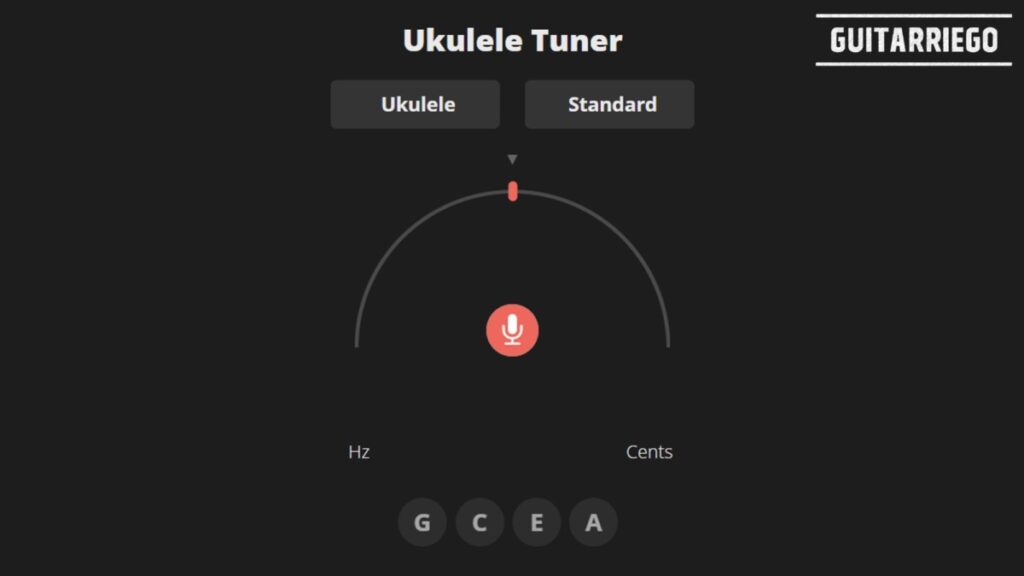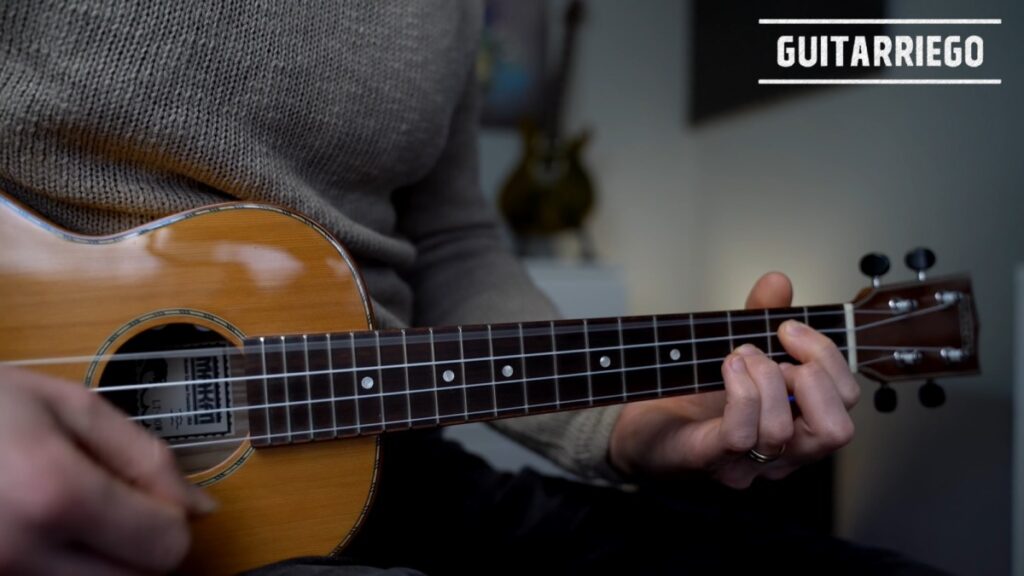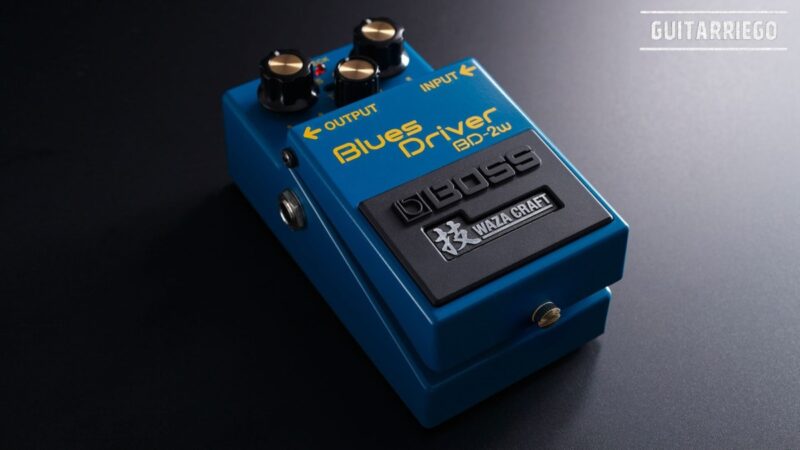Free online Ukulele Tuner with microphone for all tunings

Free online ukulele tuner with all the most used and popular ukulele tunings, a fundamental tool for any ukulele player, beginner or advanced.
Best free online ukulele tuner with microphone
With this tool you will be able to tune the ukulele in all the most popular tunings even if you are a beginner. When I started playing the ukulele I didn’t have a tuner, and if my uke went out of tune I had to wait until class for my teacher to tune it or take it to the local musical instrument store.
Today, thanks to the totally free online ukulele tuner, you can tune your musical instrument with your computer or mobile phone using this app, ideal for beginners. This free online uke tuner by microphone is intuitive and easy to use, ideal for tuning your ukulele wherever and whenever you want.
We recommend that you visit our tutorial on easy ukulele chords for beginners.
Reentrant and linear tuning
Unlike the guitar, bass, and many other stringed instruments, the ukulele is reentrant tuning, meaning the pitch is not arranged in ascending or descending order.
The ascending or descending linear tuning is one where the strings are tuned in order of tonality, from higher to lower, or vice versa. But the ukulele in its standard tuning is tuned in reentrant tuning, so the lowest pitched string on a ukulele is the third. However, there is the option of putting a fourth string one octave lower, which is called Low G instead of High G, and thus the uke is left with a linear tuning. This tuning, although it takes away the joyful character of the Ukulele a bit, makes it easier to play the plucks.

Check out our tutorial on reading music: sheet music and tabs for ukuleles.
Ukulele tunings
There are several ukulele tunings. Each string can be tuned to any note, as long as it is within the tonal range of the ukulele. However, there is a set of ukulele tunings that are the most widely used. In any case, if you are a beginner we recommend that you use only the standard tuning in C, or its variant with Low G.
Each of the letters in the tuning name represents the corresponding string on the ukulele, starting with the fourth string – the one closest to your face. Thus, in gCEA tuning, the first string is tuned to A, the second string to E, the third string to C, and the fourth string to “g.”
Thus, the most popular ukulele tunings are:
- Standard C tuning: gCEA or G4-C4-E4-A4
- Tenor or C tuning with Low G: GCEA or G3-C4-E4-A4
- Standard D tuning: aDF#B or A4-D4-F#4-B4
- Baritone tuning in G: DGBE or D3-G3-B3-E4
- Open C tuning: GCEG or G3-C4-E4-G4
- Tuning in A#: fA#DG or F4-A#4-D4-G4
You might be interested in our guide on how to write a song: lyrics, music, title and ideas.
gCEA – Standard Tuning in C
The main and most used ukulele tuning is the standard one in C or gCEA which is G4-C4-E4-A4, where the 4 indicates the octave in which it is tuned each string. To differentiate that the G on the fourth string is a higher G than the note on the third string, a lowercase g is used in standard tuning: gCEA.
Thus, the vast majority of tabs, chord diagrams and charts, and other ukulele resources are written based on C or gCEA tuning. If you are a beginner, you should focus on this ukulele tuning option to be able to accompany songs or to play with other musicians, since this tuning makes it much easier to play in the key of C major, which is widely used in a lot of music.
GCEA – Tenor Tuning in C with Low G
This is a variation on standard tuning but instead of tuning the fourth string to G4, it is tuned to G3, ie an octave lower. To do this, the tenor tuning uses a thicker fourth string. In this way, tuning in C with Low G converts the reentrant standard tuning of the ukulele to a linear tuning. Thus, the strings are tuned as follows: G3-C4-E4-A4.
Tenor tuning in C with Low G, is very friendly for guitarists who are familiar with linear tuning and also for ukulele players who pick a lot. This tuning is widely used on tenor ukuleles, hence its name tenor tuning. But also, less frequently, you can see concert or soprano ukuleles using Low G tuning.

You might be interested in visiting our ukulele parts tutorial.
aDF#B – Tuning in D
D tuning, which uses the notes aDF#B, just takes standard tuning and moves it a tone (two frets) higher. In this way the ukulele strings are tuned in A4-D4-F#4-B4. This D tuning offers a brighter, sweeter ukulele tone.
Just as standard tuning makes it easy to play in C major, this D tuning makes it easy to play the ukulele in the key of D major. This ukulele tuning was most popular during the 1920s and 1930s, so it will fit better with songs from that era. This tuning is used on smaller ukuleles such as the soprano or standard.
DGBE – Chicago or Baritone Tuning in G
DGBE tuning, also called Baritone tuning in G or Chicago, is the one used on baritone ukuleles. This is a linear tuning, that is, the fourth string is the lowest of all. In addition, this ukelele tuning is characterized by being the same as the tuning of the first four strings of the guitar: D3-G3-B3-E4. For this reason, this tuning is very popular on larger ukuleles.
Also, the DGBE tuning works great for transposing songs and chords between guitar and ukulele. So the Chicago tuning is excellent to accompany songs made for guitar. Plus, it’s the friendliest tuning for guitarists.
GCEG – Open C Tuning
This ukulele tuning has the characteristic that all the strings are tuned in the C major chord, thus, if you play the open strings the C major chord sounds. This is another linear tuning, since the fourth string of the ukulele is tuned lower than all of them and as you go down the string, the pitch is higher and higher. Thus, the ukulele strings are tuned as follows: G3-C4-E4-G4.
Open C tuning for ukulele is very practical and widely used for slide playing. This ukulele tuning is very similar to that of the Banjo, making it a very friendly tuning for banjo players.
Perhaps you are interested in learning the best easy guitar riffs for beginners with tabs to play on your ukulele.
fA#DG – A#/Bb Tuning
This ukulele tuning is the least common we’ve seen. However, the fA#DG tuning is useful in some situations. Thus, this ukulele tuning that moves all the base notes one whole tone -two frets- lower makes it easier to play music in the key of A#/Bb. The ukulele strings are tuned as follows: F4-A#4-D4-G4.
This tuning is also practical for cases in which you want to lower the tones of the ukulele a bit so that they fit with certain songs, or with your vocal range. Thus, you can transpose the key of a song to make it easier for you to sing it.
Other tunings
There are many more ukulele tunings such as fifths tuning (G3-D4-A4-E4), high G tuning (D5-G4-B4-G5), among many others. However, these are not widely used, so we will not delve into them. But it is important that you know that they exist and that our free online ukulele tuner also has them for when you need them.
Surely you are interested in learning the best easy ukulele songs for beginners.
Free online ukulele tuner
Choose your tuning and start tuning your ukulele. Confirm that the tuner recognizes the string you are tuning correctly. You can also press each note or string on the tuner to hear the note and tune by ear. If the needle points to the left, you need to adjust the string tension more. If the needle points to the right, you should loosen the tension on the string.
We have two ukulele tuner alternatives.
Note: Remember to turn on and allow your microphone access to the application. Also avoid tuning in noisy environments so that the online ukulele tuner works properly.
How to use the free online ukulele tuner?
Choose your tuning and start tuning your ukulele. Confirm that the tuner recognizes the string you are tuning correctly. You can also press each note or string on the tuner to hear the note and tune by ear. If the needle points to the left, you should adjust the string tension more. If the needle points to the right, you should loosen the tension on the string.
Tuning works best in a quiet environment, so try to avoid background noise. Keep the ukulele close to the microphone. Try adjusting your microphone sensitivity in device settings.
We leave you an online metronome to practice with your ukulele.
Why tuning the ukulele is so important?
Tuning the ukulele is very important, especially for beginning ukulelist because the ear must be educated and trained. Thus, the ear develops and gets used to playing in tune while maintaining good musical habits. Thus, you will prevent your ear from getting used to playing with your ukulele out of tune and not being educated correctly. Therefore, check the tuning periodically until you have trained your ear.
Online Tuner for Ukulele with Microphone
When you are a beginner, the simplest and most practical method to tune a ukulele is to use a tuner with a microphone. You can play each string on the ukulele directly into the microphone, which will give you real-time visual feedback as you play. This way, as we saw before, you will be able to see if the note is too flat or too sharp, and you will know how much to tighten or loosen the ukulele string tension. Whenever you find yourself with a device with a microphone such as a smartphone, tablet or laptop, you can use our free ukulele microphone tuner.
Tuning a ukulele with a guitar
Also, you can tune your ukulele using a guitar. This is because if you take the guitar and put a capo on the 4th fret and exclude the 5th and 6th string you will get the ukulele tuning but linear, like you would have a Low G, as seen in the image below.

This way, you can tune your ukulele to Low G. If you want standard tuning instead, you can take the G on the first string at the third fret or on the second string, eighth fret. So, simply tune your ukulele string until it sounds the same as the corresponding note played on the guitar. Of course this requires a minimum of training your ear, but it’s a good alternative if you don’t have a tuner handy or if you are playing with a guitar player.
Visit this review on the best cheap ukuleles for beginners.






